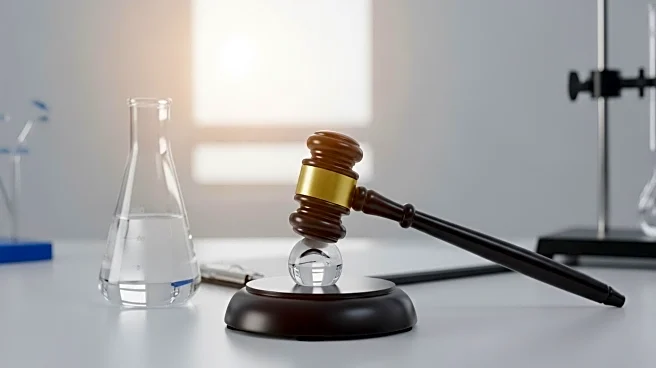What is the story about?
What's Happening?
On March 31, 2025, U.S. District Judge Sean D. Jordan vacated the FDA's Laboratory-Developed Test (LDT) Final Rule, which aimed to regulate LDTs as in vitro diagnostic medical devices. This decision follows the Supreme Court's 2024 Loper decision, which overturned the Chevron deference doctrine, affecting agency regulatory authority. LDTs are tests developed and used by CLIA-certified laboratories, distinct from centrally manufactured tests regulated as medical devices. The FDA's rule sought to phase LDTs into compliance over four years, but faced legal challenges from industry stakeholders who argued LDTs are professional services regulated under CLIA certificates. Judge Jordan's ruling emphasized LDTs as services, not devices, and applied the Loper directive for independent judicial interpretation of statutes.
Why It's Important?
The court's decision to block the FDA's LDT rule is significant as it reflects the broader impact of the Loper decision on agency authority. This ruling may encourage more challenges to regulatory actions, potentially leading to shifts in how industries are governed. For laboratories, the vacatur of the rule alleviates immediate compliance pressures, allowing them to redirect resources. However, it also leaves the regulatory landscape uncertain, with potential implications for patient safety and industry innovation. The decision underscores the need for clear legislative frameworks to balance regulatory oversight with industry growth.
What's Next?
Following the court's decision, the FDA has submitted the LDT rule for formal rescission. This outcome may prompt renewed efforts by the FDA and industry to collaborate with Congress on new legislation for LDT regulation. States might also implement their own oversight measures, similar to New York's Clinical Laboratory Evaluation Program. Meanwhile, the FDA could focus on other aspects of the LDT industry, such as specimen collection kits and lab equipment. Stakeholders should monitor developments from Capitol Hill and FDA enforcement trends, as regulatory priorities could shift with future administrations.
Beyond the Headlines
The ruling highlights the ongoing debate over the classification of LDTs as services or devices, a longstanding regulatory grey area. It raises ethical and legal questions about balancing innovation with patient safety and the role of federal versus state oversight. The decision may influence future regulatory approaches in other sectors, as industries navigate the implications of reduced agency deference. This case exemplifies the evolving dynamics between regulatory bodies and industry stakeholders in the life sciences field.
AI Generated Content
Do you find this article useful?















